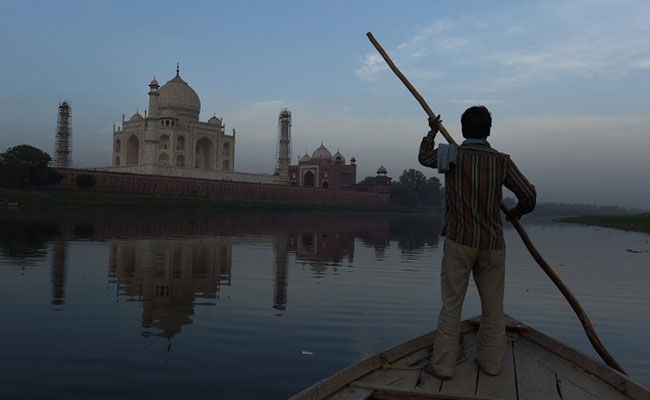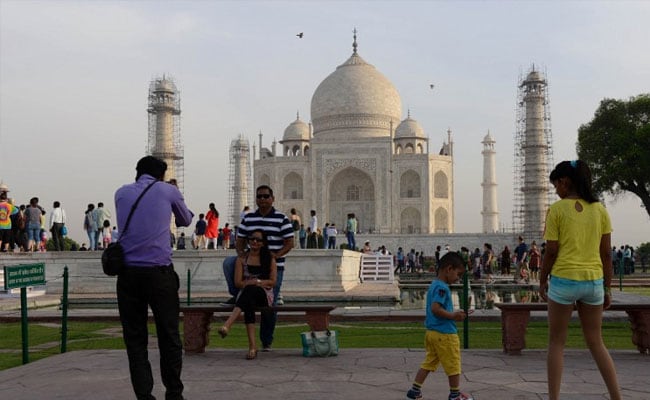
Workers have been trying to scrub the walls clean every day, but the regular scrubbing can damage the shiny marble surface. (AFP Photo)
- Insects from Yamuna ruining Taj's marble work by leaving patches on walls
- Workers scrubbing walls everyday but it can ruin the shiny marble surface
- Yamuna can't support fish that once kept insect numbers in check: Experts
Did our AI summary help?
Let us know.
Lucknow:
Archaeological experts say insects from the polluted Yamuna river near the Taj Mahal are marring the 17th century monument of love's intricate marble inlay work by leaving green and black patches of waste on its walls.
Akhilesh Yadav, Chief Minister of Uttar Pradesh, called the insect menace a matter of "serious concern."
Workers have been trying to scrub the walls clean every day, but the regular scrubbing can damage the intricate floral mosaics and shiny marble surface.
 Authorities are looking for a permanent solution to the problem created by the insects from the genus Goeldichironomus, a type of elongated fly that resembles a mosquito, that is proliferating in the polluted river. The river has stagnated to the point that it no longer supports fish that once kept the insects in check, environmentalist Yogesh Sharma said.
Authorities are looking for a permanent solution to the problem created by the insects from the genus Goeldichironomus, a type of elongated fly that resembles a mosquito, that is proliferating in the polluted river. The river has stagnated to the point that it no longer supports fish that once kept the insects in check, environmentalist Yogesh Sharma said.
In addition, heavy algal growth and deposits of phosphorus from ash dumped by a nearby cremation ground "are the primary source of food for this particular species of insect," said Girish Maheshwari, who heads the Department of Entomology at St. John's College in the northern city of Agra.
Archeologists are also struggling to protect the monument from air pollution, which turns the marble yellow and brown.
 "Officials have been asked to investigate as why there is sudden increase in number of these insects and how to control their population," Uttar Pradesh state spokesman Navneet Sehgal said.
"Officials have been asked to investigate as why there is sudden increase in number of these insects and how to control their population," Uttar Pradesh state spokesman Navneet Sehgal said.
The Taj Mahal was built by Mogul Emperor Shah Jahan between 1632 and 1654 for his wife, Mumtaz Mahal, and houses their graves and a mosque.
Akhilesh Yadav, Chief Minister of Uttar Pradesh, called the insect menace a matter of "serious concern."
Workers have been trying to scrub the walls clean every day, but the regular scrubbing can damage the intricate floral mosaics and shiny marble surface.

Taj Mahal stands on the banks of the polluted river Yamuna. (AFP Photo)
In addition, heavy algal growth and deposits of phosphorus from ash dumped by a nearby cremation ground "are the primary source of food for this particular species of insect," said Girish Maheshwari, who heads the Department of Entomology at St. John's College in the northern city of Agra.
Archeologists are also struggling to protect the monument from air pollution, which turns the marble yellow and brown.

Many tourists from across the world visit Taj Mahal everyday. (AFP Photo)
The Taj Mahal was built by Mogul Emperor Shah Jahan between 1632 and 1654 for his wife, Mumtaz Mahal, and houses their graves and a mosque.
Track Latest News Live on NDTV.com and get news updates from India and around the world

